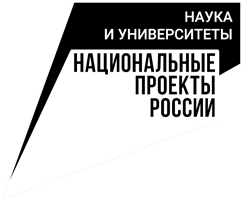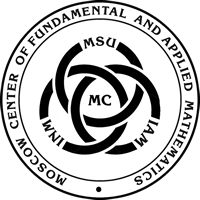The seminar is devoted to various aspects of the application of supercomputer modeling methods for solving weather and climate forecasting problems.
Seminar Leader:
- Sadovnichy V.A., academician, rector of Lomonosov Moscow State University
Co-leaders of the seminar:
- Wilfand R.M., Doctor of Technical Sciences, Scientific Director of the Hydrometeorological Center of Russia
- Dobrolyubov S.A., Corr. RAS, Dean of the Faculty of Geography, Lomonosov Moscow State University
- Lykosov V.N., Corr. RAS, chief scientist Institute of Computational Mathematics, Russian Academy of Sciences, Head. Laboratory of Supercomputer Modeling of Natural and Climatic Processes of RCC MSU
- Stepanenko V.M., Doctor of Physics and Mathematics, Deputy Director of RCC MSU
Scientific Secretary of the seminar:
- Mortikov E.V., Ph.D., Researcher of RCC MSU
PROGRAM
17:30
| Timo Vesala | Institute of Atmospheric and Earth System Research/Physics, Faculty of Science, University of Helsinki Institute of Atmospheric and Earth System Research/Forest Sciences, Faculty of Agriculture and Forestry, University of Helsinki |
| Tuomo Kalliokoski | Ministry of the Environment |
| Pasi Kolari | Institute of Atmospheric and Earth System Research/Physics, Faculty of Science, University of Helsinki |
| Daniela Franz | Institute of Atmospheric and Earth System Research/Physics, Faculty of Science, University of Helsinki |
| Laura Matkala | Institute of Atmospheric and Earth System Research/Forest Sciences, Faculty of Agriculture and Forestry, University of Helsinki |
| Jaana Bäck | Institute of Atmospheric and Earth System Research/Forest Sciences, Faculty of Agriculture and Forestry, University of Helsinki |
CARBON CYCLE OBSERVATIONS, FOREST HARVESTING AND PUBLIC DISCOURSE
Carbon balance of forests is defined by three main processes; photosynthesis, autotrophic respiration, and heterotrophic respiration. We provide an overview on carbon cycle observations techniques, which are mostly deployed presently and are state-of-art. 1) Traditional forest inventories could include sampling, allometric methods, terrestrial laser scanning. Forest inventories are traditionally conducted to determine the economic value of forest resources. 2) The chamber technique for observing fluxes of different GHGs is particularly well-suited for laboratory-based and in-situ process-level studies. A chamber generally encloses the compartment of interest such as a leaf or branch or a certain tree stem or soil surface area (typically < 1 m^2) and follow the concentration change of the gas in a chamber, from which the exchange rate, i.e. the flux, can be estimated. 3) The eddy covariance technique is a widely used and one of the most direct and accurate methods for quantifying exchanges of gases between an ecosystem and atmosphere. It is based on determining the turbulent vertical transport of matter and energy at a certain measurement height above the ecosystem, typically averaged over a 30-minute period. 4) For large scale observations, platforms for continuous monitoring and flask sampling are, for instance, continental stations (tall towers specifically built for this purpose or existing television, radio and cell phone towers), mountain and coastal stations and airborne platforms (aircrafts, helicopters). Atmospheric GHG concentration measurements are spatially integrating measurements and, thus, mixed signals of different GHG sinks and sources including fossil fuel emissions. The surface fluxes can be estimated from the precise concentrations by mathematical inversions. 5) Aircraft and satellite remote sensing (like Landsat, MODIS) can support several ways the quantification of forest carbon storage and its changes on different spatial scales and new techniques are progressively developed. There are several ways how remote sensing can support the quantification of forest carbon storage and its changes on different spatial scales and new techniques are progressively developed. However, it is not suitable as stand-alone method as it requires ground-truthing. Each observational method has inherent sources of error, which have to be considered during the selection of the methods and appropriately handled in the quality control and data analysis.
We have participated in several acts of writings, public discourses and seminars concerning the effects of forest utilization on climate and biodiversity. Writings include, among other things, long reports (multiple authors), newspaper columns and public letters (multiple authors). Finland is planning to increase substantially harvesting of timber, which leads, in the short-term (by mid 2000 century), increased carbon dioxide emissions into the atmosphere. Based on best available scientific understanding, these communications and writings have criticized these plans, which eventually lead to situation where the forest management actions in Finland are against the targets set by the Paris Climate Agreement and endanger the present level of biodiversity.
The core of the criticism has been in the planned massive intensification of forest use as bioenergy, leading to increased harvests in the expense of carbon storage and sinks, and possibly even harvesting previously economically non profitable stands with the help of government subsidies. This view has been based on the proposed carbon neutrality of forest biomass, however it is not accounting for e.g. the poor energy content of forest biomass in comparison to other energy sources, nor the climate relevant emissions from forest harvesting which last for decades after clear-cut. Therefore, the climate neutrality of forest-based bioenergy can be questioned.
The comments and feedback we have obtained have varied greatly, depending on the perspective of the commenting persons and organisations. The discussion fora for replies have ranged from social media to newspaper articles and policy debates in scientific arena. On the one hand, we have been acknowledged for participating in the important socio-economic debate, for bringing the scientific arguments to the discussion and for clarifying the complex problem, where the terms and concepts are sometimes presented very vaguely. On the other hand, we have been accused for, e.g., being extremely narrow-minded and biased, for forgetting the economic realities and being unpatriotic, in addition to presenting dangerous things towards Finland and the finnish pulp and paper industry. Our statements are blamed to be post-truth politics and representing green left values without scientific facts.
We aim at clarifying the background of this public dialogue and argue that a scientists’ responsibility is to participate also in public debates that concern the research field (s)he is working with. Scientists are often in a position where they are able to provide strong scientific argumentation on the climate change questions, and thus effectively contribute to the policy-relevant dialogue.
The seminar will be held in the form of a webinar on the Zoom platform.
Join Zoom Meeting: https://us02web.zoom.us/j/86136091913?pwd=emNETndFalVrVmY4bHd1N3pIdmVRdz09
Meeting ID: 861 3609 1913
Passcode: 783968
Instructions for installing and using the Zoom platform are available here:
https://support.zoom.us/hc/ru/articles/201362033-Начало-работы-на-ПК-и-Mac
To simplify our work during the seminar, please do the following: check in advance that Zoom works correctly (in the Zoom application settings, you can check the quality of the speakers and microphone) and enter the full surname, first name and patronymic in your profile settings (this can be done on on your profile page (https://us02web.zoom.us/profile)) - in this case, conference colleagues will see how to call to you.

